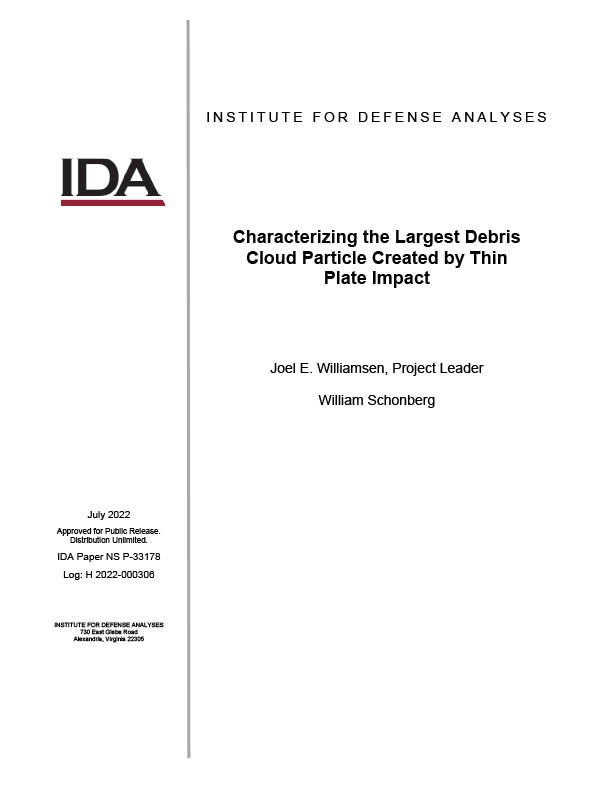Characterizing the Largest Debris Cloud Particle Created by Thin Plate Impact
July, 2022
IDA document: P-33178
FFRDC: Systems and Analyses Center
Type: Documents,
Space
Division: Operational Evaluation Division
Authors:
IDA document: P-33178
FFRDC: Systems and Analyses Center
Type: Documents
Division: Operational Evaluation Division
Authors:
Authors
Joel E. Williamsen, William Schonberg
See more authors

